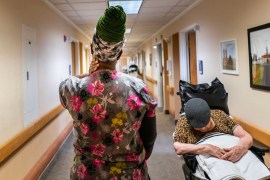Kaiser Daily HIV/AIDS Report Summarizes Reports, Initiatives From International AIDS Conference — Aug. 5
As part of its expanded coverage of the XVII International AIDS Conference, which is being held Aug. 3 through Aug. 8 in Mexico City, the Kaiser Daily HIV/AIDS Report will feature studies and initiatives released during the conference. Summaries of select publications and initiatives appear below.
- "Increased Vulnerability to HIV/AIDS for Mexicans Migrating to the United States," University of California: University of California researchers during the conference presented three studies that found Mexican migrants have an increased risk of HIV after coming to the U.S. The first study was conducted by researchers from the California HIV/AIDS Research Program, the California Office of AIDS and the Mexican National HIV/AIDS Center, or CENSIDA. The venue-based survey was conducted in San Diego and Fresno counties in California and showed large increases in HIV risk behaviors among male Mexican migrants. For the second study, researchers from the Mexican Secretariat of Health and CHRP collaborated on an ethnographic study of Zapotecan migrants in Oaxaca, Mexico, and Fresno. They found that HIV/AIDS information has been widely disseminated among the Zapotecan population. The third study -- conducted by researchers from the University of California-San Diego School of Medicine in collaboration with Pro-COMUSIDA and CENSIDA -- found that male injection drug users deported from the U.S. to Tijuana had a fourfold increased risk of HIV compared with those living in Tijuana who were not deported there (University of California release, 8/5).
- "Policy Guidelines for Collaborative TB and HIV Services for Injecting and Other Drug Users: An Integrated Approach," World Health Organization: The guidelines are the first to include tuberculosis and HIV care within the context of support for drug users. According to the guidelines, health and criminal justice authorities should provide targeted services to drug users, particularly injection drug users, to prevent and treat TB and HIV. Although TB is a primary cause of death among HIV-positive people, drug users who are HIV-positive experience stigma, discrimination and barriers to treatment, according to WHO. The guidelines make recommendations to reduce such deaths, including increasing access to antiretroviral drugs and the TB drug isoniazid for drug users living with HIV (WHO release, 8/4).
- "The Right to Health and Health Workforce Planning: A Guide for Government Officials, NGOs, Health Workers and Development Partners," Physicians for Human Rights: The guide -- which was created by PHR in collaboration with several African nongovernmental organizations, government officials and health providers -- examines how even impoverished countries can incorporate human rights into health work force planning and improve health standards. It also looks at why human rights-based approaches to health work force planning are needed and how countries can create plans that ensure universal access to health (PHR release, 8/4).
Kaisernetwork.org is the official webcaster of the XVII International AIDS Conference in Mexico City. Click here to sign up for your Daily Update e-mail during the conference. This is part of the Morning Briefing, a summary of health policy coverage from major news organizations. Sign up for an email subscription.






